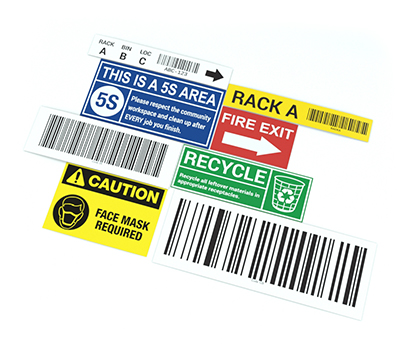
If you are starting a project involving an electrical system, you need to make sure you know what each wire is so that it can be safely hooked up. While all electrical wires should be treated as if they were live until you can prove otherwise, it is the hot wire that is actually bringing the current to the device in question. Because of this, you need to take extra precautions whenever working with the hot wire. With this in mind, you need to know how to identify which wire is hot.

Wire Coloring Standards
The easiest way to determine if a wire is the hot wire is to look at the color. Almost all systems will follow the wire coloring standard, which says that hot wires should be black. If you see a black wire, it will almost certainly be hot, and should be treated as such until you can prove that this is not the case. Black wiring has been used for the hot wire for many decades now, so it is unlikely that you will run into an exception to this rule, unless the system was improperly installed.
Testing the Wire
If you have reason to believe that the person who previously worked on that electrical system didn’t use the proper color wires, you can always test them to be sure. To do this, remove the wire from the power source, and separate each of the wires at the end so that they are exposed. Restore power to the system, and then touch your multimeter or other voltage checker to each of the exposed wires. In this test, only the hot wire will have an electrical current on it, so you will know for sure that it is the hot wire. If you find that you have a hot wire that is not black, it is a good idea to replace that wire with one that is black so anyone working on the system in the future won’t run into the same issue. Following wire color standards is an important safety step that should always be followed.
Additional Wire facts:
- The black wire is known as the hot wire; this is a current carrying conductor. Its job is to carry power from the breaker to the outlet. The neutral wire color is white; this is also considered a current carrying conductor. Its job is to carry any excess or stray voltage safely back to the electrical panel. Source: https://homeinspectorsecrets.com/electrical/identify-basic-electrical-wiring/
- In the United States, black wires are the standard color for hot wires. A hot wire is the one that carries the electrical current from the power source to the load, such as your lighting fixtures or outlets. The white wire goes by many names that all mean the same thing: neutral, common, or return. Power flows from the box to the outlet through the black wire and back to the box through the white one. The neutral wire can also be gray. Source: https://www.ferkeybuilders.com/understanding-electrical-wiring-white-or-black-which-wire-is-the-hot-wire/
- The easiest way to determine if a wire is the hot wire is to look at the color. Almost all systems will follow the wire coloring standard, which says that hot wires should be black. If you see a black wire, it will almost certainly be hot, and should be treated as such until you can prove that this is not the case. Source: https://www.allaboutcircuits.com/textbook/reference/chpt-2/wiring-color-codes/
- Sometimes you’ll find a white wire with a piece of black electrical tape wrapped around it. By convention, that means the wire is hot. If you have a ground wire, it’s green or bare. The ground wire is for safety. When you connect an outlet or light switch, the black wire goes to the brass screws. The ground wire goes to the green screw. The white wire goes to the white-metal screws on an electrical outlet. Source: https://dfarq.homeip.net/is-the-black-wire-hot/
- In a 110-volt setup, an additional wire, usually red or blue, normally indicates a hot wire controlled by a light switch. Under those conditions, a black wire should be always hot and always on. The additional wire is hot but switched off at the switch. In a 220-volt setup, you have two 110-volt leads. In that case, the white wire can also be hot. A white wire being used this way should be marked, but it might not be. So be careful with 220. Source: https://dfarq.homeip.net/is-the-black-wire-hot/
Similar Questions
- How can wires be tested to tell if it’s hot?
- How are live wires identified?
- How are neutral wires identified?
- What is the Color of the Ground Wire?
- What’s the difference between a positive and neutral wire?
- What is a phase wire?
- What is the gray wire color used for?
- What does the neutral wire do?
- How do wire color codes improve safety?

